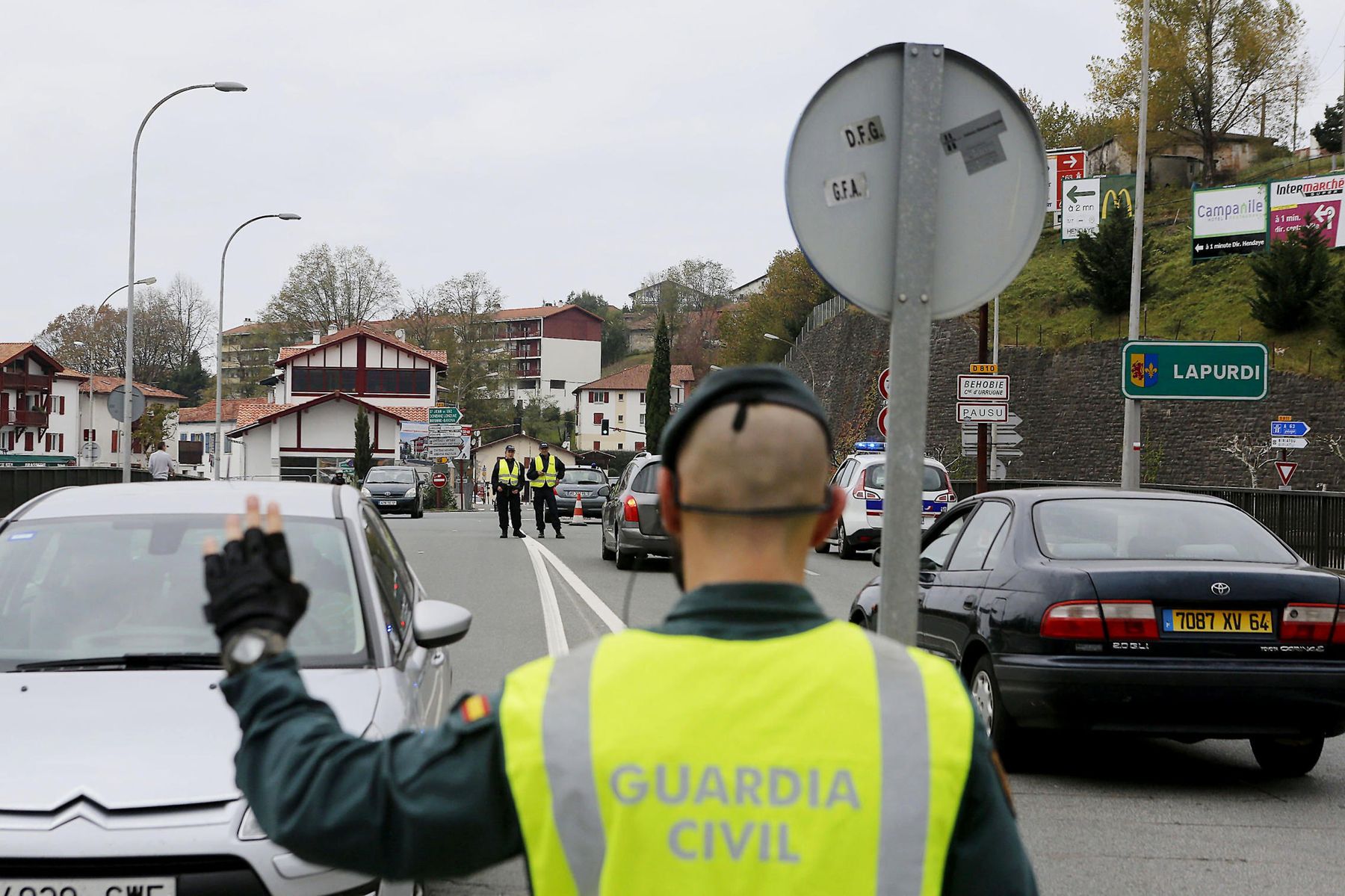In ancient times the Pyrenees were not a border
- Collado de Ibañeta about 2,000 years ago. The Romans built the road to pass the Pyrenees on this point. In 2008, the Aranzadi Society of Sciences began to look for the roadway to which old sources refer.

The Ibañeta pass was of great importance in the Middle Ages, since the Camino de Santiago was running around and, among other things, was confronted in those areas of the Roncesvalles conflict. But also some authors of Antiquity mention this road (Ptolemy, Antonino and the anonymous of Ravenna) as an expression of its importance in the Roman era. There were then three steps that crossed the mountain: east, Panissars; center, Somport; and west, Ibañeta. This road connected Cesaraugusta with Burdigala (Zaragoza and Bordeaux) and passed through Pompaelo (Pamplona). Therefore, the passage of Ibañeta was essential to connect the Roman cities of the Atlantic facade.
In 2008, the Aranzadi Society of Sciences began to look for the roadway to which old sources refer. In their beginnings they dedicated themselves to prospecting, focused on vestiges of different times, but they specialized mainly in the Roman road. The first track was discovered in 2011 and started digging in 2012. With the information collected they have completed the website of the Roman Highway of the Pyrenees calzadaromanadelpirineo.eus/eu/. And the 26-kilometer road from Zazpe to Aurizper has also been pointed out to the hiker.
Whoever makes this journey will not find a path of stone slabs. This is the image we have of the Roman roads, but the Aranzadi study has shown that, although urban roads were covered by slabs, in most cases the intermediate roads were dirt roads because they were easier to maintain. The visitor will not find great slopes; throughout the tour there is no more than 6% of slope, according to Oihane Mendizabal, Aranzadi’s colleague, “as most of the transportation was carried out through cars and animals, they preferred to prolong the journey so that the road was smoother than going up a strong slope”.
In addition, on both sides of the mountain range, in Donazahar (Baja Navarra) and Artzi (Alta Navarra), where an abrupt orography starts, rest areas have been found that may be “restop type”. Researchers have come to the conclusion that both spaces have very similar characteristics. And, therefore, this indicates that in the Roman era the Pyrenees were a point of connection, rather than a border.
Guardia Zibilaren historia bat - Hemendik alde egiteko arrazoiak izenburupean, datorren astean argitaratuko dugun 305. LARRUN aldizkariaren pasarte batzuk dira ondorengoak, erakunde armatuaren sorrera garaietan girotutakoak.
Iazko uztailean, ARGIAren 2.880. zenbakiko orrialdeotan genuen Bego Ariznabarreta Orbea. Bere aitaren gudaritzaz ari zen, eta 1936ko Gerra Zibilean lagun egindako Aking Chan, Xangai brigadista txinatarraz ere mintzatu zitzaigun. Oraindik orain, berriz, Gasteizen hartu ditu... [+]
Aranzadi Zientzia Elkarteko Etnografia Sailaren zuzendari berria da Maite Errarte Zurutuza (Beasain, 1995), urrian Fermin Leizaolaren lekukoa hartu ondoren. Kultura materiala aztertzen jarraitzeko beharra azpimarratu du, gizartearen memoria eta bizimodu aldaketak erregistratzeko... [+]
Eskultura grekoerromatarrek bere garaian zuten itxurak ez du zerikusirik gaurkoarekin. Erabilitako materiala ez zuten bistan uzten. Orain badakigu kolore biziz margotzen zituztela eta jantziak eta apaingarriak ere eransten zizkietela. Bada, Cecilie Brøns Harvard... [+]
Japonia, XV. mendea. Espioitzan eta hilketa ezkutuetan espezializatutako eliteko talde militarra sortu zen. Edo horixe uste du behintzat Stephen Turnbull historialari britainiarrak. Beste aditu batzuen ustez, askoz lehenago sortu ziren ninjak, duela 2.300-2.500 urte inguru. Eta... [+]
Gogora Institutuak 1936ko Gerrako biktimen inguruan egindako txostenean "erreketeak, falangistak, Kondor Legioko hegazkinlari alemaniar naziak eta faxista italiarrak" ageri direla salatu du Intxorta 1937 elkarteak, eta izen horiek kentzeko eskatu du. Maria Jesus San Jose... [+]
Familiak eskatu bezala, aurten Angel oroitzeko ekitaldia lore-eskaintza txiki bat izan da, Martin Azpilikueta kalean oroitarazten duen plakaren ondoan. 21 urte geroago, Angel jada biktima-estatus ofizialarekin gogoratzen dute.
Atapuercako aztarnategian hominido zahar baten aurpegi-hezur zatiak aurkitu dituzte. Homo affinis erectus bezala sailkatu dute giza-espezieen artean, eta gure arbasoek Afrikatik kanpora egindako lehen migrazioei buruzko teoriak irauli ditzake, adituen arabera.
Chão de Lamas-eko zilarrezko objektu sorta 1913an topatu zuten Coimbran (Portugal). Objektu horien artean zeltiar jatorriko zilarrezko bi ilargi zeuden. Bi ilargiak apaingarri hutsak zirela uste izan dute orain arte. Baina, berriki, adituek ilargietan egin zituzten motibo... [+]
Hertfordshire (Ingalaterra), 1543. Henrike VIII.a erregearen eta Ana Bolenaren alaba Elisabet hil omen zen Hatfield jauregian, 10 urte besterik ez zituela, sukarrak jota hainbat aste eman ondoren. Kat Ashley eta Thomas Parry zaintzaileek, izututa, irtenbide bitxia topatu omen... [+]
Urte bat beteko da laster Pazifikoko Kanaky herriko matxinada eta estatu-errepresiotik. Maiatzaren 14an gogortu zen giroa, kanaken bizian –baita deskolonizazio prozesuan ere– eraginen lukeen lege proiektu bat bozkatu zutelako Paristik. Hamar hilabete pasa direla,... [+]
Kanakyko Gobernuko kide gisa edo Parisekilako elkarrizketa-mahaiko kide gisa hitz egin zezakeen, baina argi utzi digu FLNKS Askatasun Nazionalerako Fronte Sozialista Kanakaren kanpo harremanen idazkari gisa mintzatuko zitzaigula. Hitz bakoitzak duelako bere pisua eta ondorena,... [+]
Hiru bideo dira (albiste barruan ikusgai). Batak jasotzen du, grebak antolatzea leporatuta, Carabanchelen espetxeratu zituzten Jesús Fernandez Naves, Imanol Olabarria eta Juanjo San Sebastián langileak espetxetik atera ziren unea, 1976ko abuztuan. Beste biak Martxoak... [+]























